Top DePIN Projects 2024: DePIN Crypto to Watch!
The article explores the concept of Decentralized Physical Infrastructure Networks (DePINs) and their integration with Web3 technology. DePINs aim to decentralize and tokenize various layers of physical infrastructure, such as servers, data storage, and network protocols. This decentralization offers a new paradigm for globally distributed and self-governing infrastructure projects.
The article categorizes DePIN projects into two main sectors: Physical Resource Networks and Digital Resource Networks. Physical Resource Networks focus on optimizing and managing physical infrastructure, including wireless networks, geospatial networks, mobility networks, and energy networks. Digital Resource Networks, on the other hand, manage digital resources like storage, computing power, and bandwidth through platforms like storage networks, compute networks, and bandwidth networks.
The article highlights several notable DePIN projects within these categories:
1. The Graph Protocol: A decentralized indexing protocol that tokenizes on-chain data, allowing users and applications to retrieve information quickly and efficiently.
2. Theta Network: A decentralized content delivery network (CDN) that utilizes spare bandwidth and computing power to enhance video streaming, reducing the reliance on centralized CDN providers.
3. Akash Network: A decentralized cloud computing platform that enables individuals with spare computational resources to participate in an on-chain compute marketplace, providing a cost-effective alternative to centralized cloud providers.
4. Arweave: A decentralized data storage network that offers permanent and immutable storage solutions, leveraging blockchain technology to ensure secure and scalable data storage.
5. Filecoin: A decentralized data storage network that creates an open market for storage, allowing anyone to rent out their hardware storage on a blockchain, incentivized by the native token FIL.
6. Render Network: A compute network protocol that enables users to rent out idle GPU power for tasks like 3D rendering and AI computation, creating a market for GPU power valued in the RNDR token.
7. Helium: A globally distributed hotspot network that creates a public decentralized wireless network for IoT and cellular devices, incentivizing hotspot owners to provide network coverage through the HNT token.
8. Hivemapper: A decentralized geospatial network that tokenizes and creates an open market for spatial data, enabling users to contribute to the development of high-quality maps and earn rewards in the HONEY token.
9. DIMO: A project that aims to democratize vehicle data collection and enable users to capitalize on the data generated by their vehicles by selling it in NATIX tokens.
The article emphasizes that while DePINs have the potential to improve the efficiency and scalability of infrastructure management, their long-term effectiveness and sustainability need to be tested in real-world scenarios. Ongoing assessment and adaptation will be essential to ensure that these technologies can meet future demands in infrastructure management.
Overall, the article provides an overview of the emerging field of DePINs and showcases a range of projects that are pioneering this decentralized infrastructure approach.
The article explores the concept of Decentralized Physical Infrastructure Networks (DePINs) and their integration with Web3 technology. DePINs aim to decentralize and tokenize various layers of physical infrastructure, such as servers, data storage, and network protocols. This decentralization offers a new paradigm for globally distributed and self-governing infrastructure projects.
The article categorizes DePIN projects into two main sectors: Physical Resource Networks and Digital Resource Networks. Physical Resource Networks focus on optimizing and managing physical infrastructure, including wireless networks, geospatial networks, mobility networks, and energy networks. Digital Resource Networks, on the other hand, manage digital resources like storage, computing power, and bandwidth through platforms like storage networks, compute networks, and bandwidth networks.
The article highlights several notable DePIN projects within these categories:
1. The Graph Protocol: A decentralized indexing protocol that tokenizes on-chain data, allowing users and applications to retrieve information quickly and efficiently.
2. Theta Network: A decentralized content delivery network (CDN) that utilizes spare bandwidth and computing power to enhance video streaming, reducing the reliance on centralized CDN providers.
3. Akash Network: A decentralized cloud computing platform that enables individuals with spare computational resources to participate in an on-chain compute marketplace, providing a cost-effective alternative to centralized cloud providers.
4. Arweave: A decentralized data storage network that offers permanent and immutable storage solutions, leveraging blockchain technology to ensure secure and scalable data storage.
5. Filecoin: A decentralized data storage network that creates an open market for storage, allowing anyone to rent out their hardware storage on a blockchain, incentivized by the native token FIL.
6. Render Network: A compute network protocol that enables users to rent out idle GPU power for tasks like 3D rendering and AI computation, creating a market for GPU power valued in the RNDR token.
7. Helium: A globally distributed hotspot network that creates a public decentralized wireless network for IoT and cellular devices, incentivizing hotspot owners to provide network coverage through the HNT token.
8. Hivemapper: A decentralized geospatial network that tokenizes and creates an open market for spatial data, enabling users to contribute to the development of high-quality maps and earn rewards in the HONEY token.
9. DIMO: A project that aims to democratize vehicle data collection and enable users to capitalize on the data generated by their vehicles by selling it in NATIX tokens.
The article emphasizes that while DePINs have the potential to improve the efficiency and scalability of infrastructure management, their long-term effectiveness and sustainability need to be tested in real-world scenarios. Ongoing assessment and adaptation will be essential to ensure that these technologies can meet future demands in infrastructure management.
Overall, the article provides an overview of the emerging field of DePINs and showcases a range of projects that are pioneering this decentralized infrastructure approach.
The most apparent narrative that marks the crypto theme in 2024 and the current market cycle is the integration of Web3 with the physical world. The explosive growth of Tokenized Real-World Assets (RWAs) and the burgeoning innovation of Decentralized Physical Infrastructure Networks (DePIN) exemplify this trend.
At its core, blockchain technology pioneered decentralized networks and Web3. Now, DePIN takes this innovation a step further by decentralizing and tokenizing various infrastructural layers—from servers and querying protocols to data collection, analytics, and storage networks. This holistic decentralization offers a new paradigm for how infrastructure projects can operate as a globally distributed and self-governing network.
I have curated a list of the Top DePIN Projects in 2024. It is important to clarify that this article is not intended to provide financial advice. Instead, it aims to introduce you to the DePIN ecosystem and encourage you to explore, think critically, and conduct thorough research on what could potentially reshape the future of both the digital and physical worlds.
Understanding DePIN
Decentralized Physical Infrastructure Networks (DePINs) represent a pivotal shift towards leveraging blockchain technology to democratize, increase efficiency, and reduce centralized control of Physical Infrastructure Networks.
Physical Infrastructure Networks culminate all the servers, computers, and wireless networks that govern online data storage, usage, and access control. Corporations like Google Cloud Computing, Microsoft Azure, and Amazon Web Services provision these networks and exert a data monopoly.
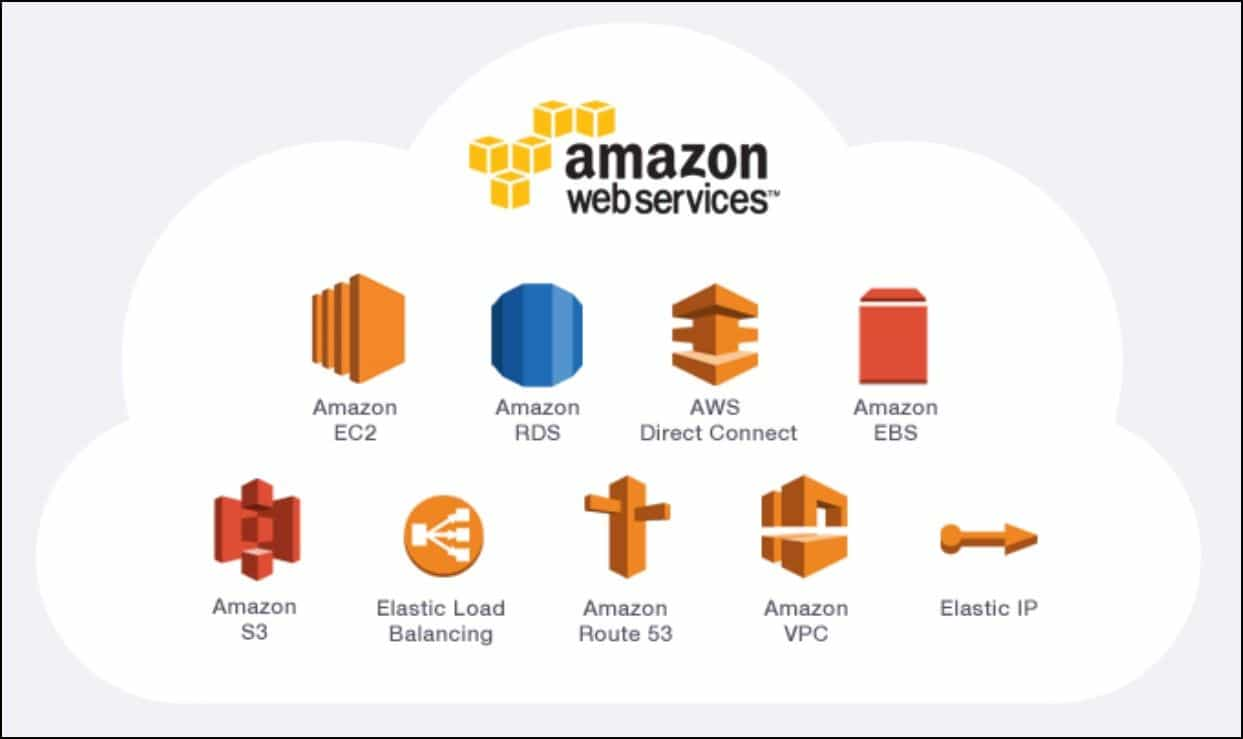
Shift to Decentralization
Several factors have driven the move toward decentralized infrastructure:
- Public Pressure: Growing demands for transparency and accountability in infrastructure management have driven the adoption of systems that allow for more public participation and oversight.
- Growth of Web3: Blockchain technology successfully established a sustainable and globally distributed computing and networking layer, an ideal blueprint for infrastructure networks.
- Cost Efficiency: Web3 has the potential to achieve greater cost efficiency and democratized value flow using distributed networks.
Role of Blockchain in Enabling DePIN Solutions
Blockchain accelerated DePIN adoption by providing several fundamental qualities of DePIN systems:
- Transparency and Security: Distributed ledgers enable real-time sharing of immutable data, reducing trust and increasing accountability. Pooled security offers greater economic guarantees than any individual security layer.
- Operational Efficiency: Smart contracts can automate data operations, eliminating the need for a dedicated compute layer.
- Decentralized Governance: Tokenized governance enables more granular stakeholder participation in decision-making. Consensus mechanisms ensure voting is swift, transparent, and follows strict communication standards.
To summarize, blockchains are the most successful distributed network design. They are key enablers of DePIN solutions because the same decentralized framework is sufficient for implementing DePIN solutions with minute hardware optimizations and smart contract programming. Conversely, DePIN enables full-stack Web3 decentralization and makes it self-sufficient.
The DePIN Ecosystem
Let’s quote Messari’s DePIN sector map to understand the various categories in this ecosystem.
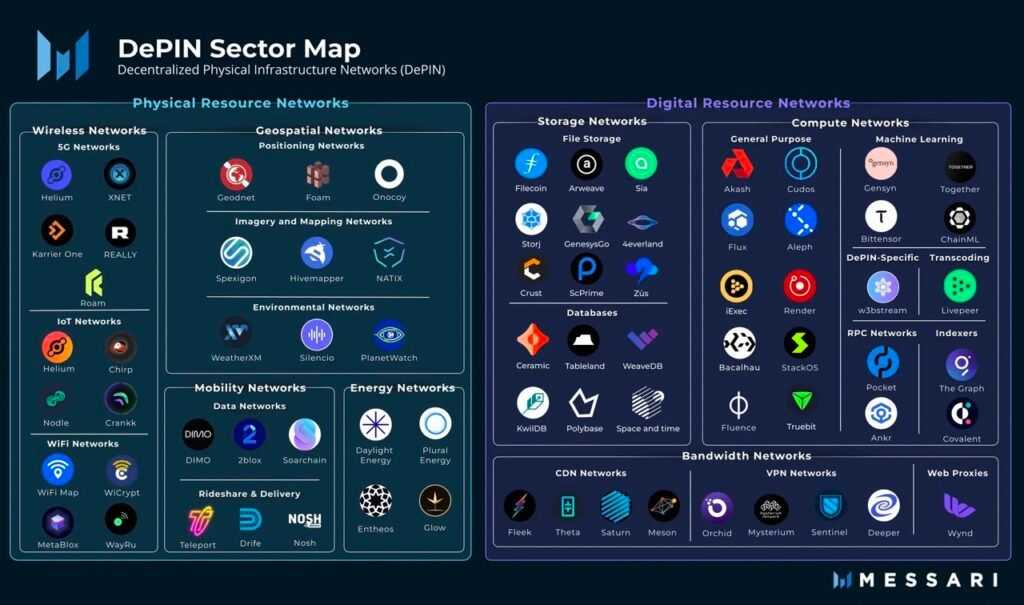
The DePIN Sector Map
Messari divides the DePIN sector into two broad categories:
Physical Resource Networks
Physical Resource Networks in the DePIN ecosystem utilize decentralized methods to manage and optimize physical infrastructure. This category harnesses blockchain technology to enhance the efficiency, reliability, and accessibility of essential services across various sectors, including wireless communication, spatial data, transportation, and energy. There are some sub-types:
- Wireless networks: Wireless networks are decentralized networks that provide connectivity services over a distributed array of devices. Helium exemplifies this by using a peer-to-peer network of hotspots that provide network coverage and reward operators with cryptocurrency.
- Geospatial Networks: Geospatial Networks involve the decentralized collection, verification, and utilization of spatial data. Hivemapper, for example, crowdsources map data through users equipped with dashcams to build and update maps dynamically, demonstrating a new collaborative geospatial data gathering model.
- Mobility Networks: Mobility Networks use decentralized solutions to improve transportation and logistics systems. DIMO stands out in this category by offering a platform where data from vehicles is collected and analyzed decentralized, enabling smarter mobility solutions.
- Energy Networks: Energy Networks incorporate decentralized technologies to streamline and enhance energy distribution and consumption. Plural Energy utilizes blockchain to create a decentralized energy marketplace where users can trade energy efficiently and transparently.
Digital Resource Networks
Digital Resource Networks utilize decentralized platforms to manage digital resources such as storage, computing power, and bandwidth. This category ensures secure, efficient, and scalable digital services by leveraging blockchain technology to distribute the operational load across multiple nodes. There are some sub-types:
- Storage Networks: Filecoin and Arweave Storage Networks are decentralized platforms designed to offer secure and scalable data storage solutions. Such platforms allow users to rent out their excess storage space on a blockchain network, ensuring data is stored safely across multiple locations.
- Compute Networks: - These networks provide decentralized computing resources for various applications. Users can access distributed GPU or other computing resources to run intensive applications by utilizing networks like Akash and Render, reducing reliance on centralized cloud providers.
- Bandwidth Networks: Bandwidth Networks like Theta focus on the decentralized distribution and management of internet bandwidth. Theta Network exemplifies this sub-category by allowing users to share their spare bandwidth on a peer-to-peer basis, optimizing online video delivery and reducing bandwidth costs.
With a clear picture of the DePIN ecosystem, it is time to analyze some notable projects in this sector.
The Graph Protocol
The Graph is a decentralized indexing protocol. Indexing is the practice of organizing online data into structured formats and mapping them so that users or web applications can retrieve it swiftly. It is the backbone of the internet and a major reason behind the blazing-fast internet we cherish today.
Businesses like Amazon Web Services provide indexing services to much of Web2, providing cloud services to millions of customers around the globe. Many decentralized applications we use regularly rely on such centralized services for several aspects of their architecture. For instance, the user interface for many Dapps may rely on centralized services for web hosting, data storage, and indexing.
The Graph Protocol creates an open market for indexed blockchain data. It tokenizes on-chain data, where participants curate and index data and sell it in an on-chain market based on GRT, the native token of the Graph ecosystem. The indexed data in the Graph are called subgraphs. Users, who may be physical users or decentralized applications, can buy the subgraphs that are useful to them.
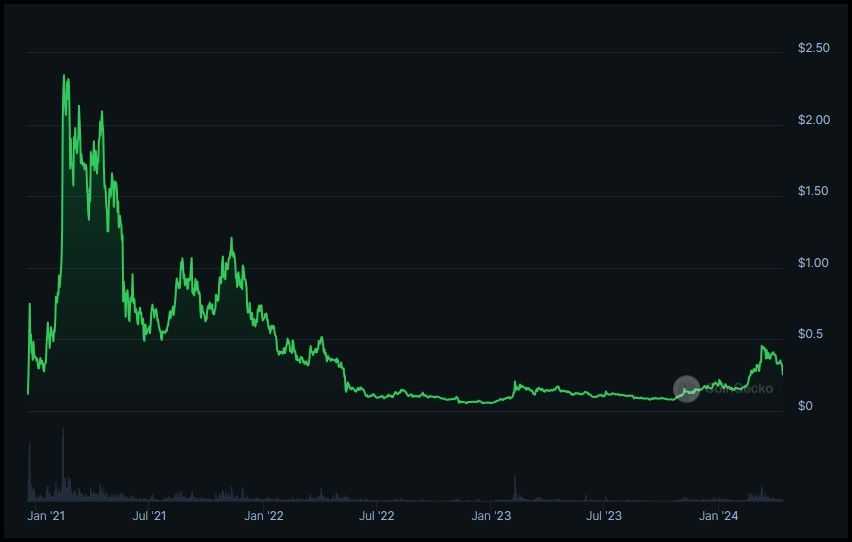
The Graph tokenizes data and eliminates the need for centralized services like AWS and fall in a DePIN category called compute networks. Another project operating in this niche is Covalent. Learn more about the project in the Graph Review.
Theta Network
Content Delivery Network (CDN) services are crucial for the modern internet infrastructure. A CDN network fetches and delivers content such as images, videos, web pages, and cloud files to users with speed and security.
The Theta Network is a decentralized CDN service provider that falls into the bandwidth networks DePIN category. It enhances video streaming by tokenizing CDN services so that users with spare bandwidth and computing resources can share it with the network and eliminate the need for centralized CDN networks.
Here’s a high-level rundown of how Theta works:
- Sharing Bandwidth and Resources: Users can watch videos and use some of their spare bandwidth to serve some of that video to others, reducing load and buffer times.
- Rewards: Bandwidth providers earn TFUEL, the operational token of the Theta ecosystem. TFUEL is the transaction currency used to pay nodes for operations like video streaming and computation.
- Decentralized Network: The Theta blockchain records on-chain transactions and hosts the nodes that provide CDN services and validation services. The blockchain settles in the THETA token, which is used for consensus, staking, and ecosystem governance.
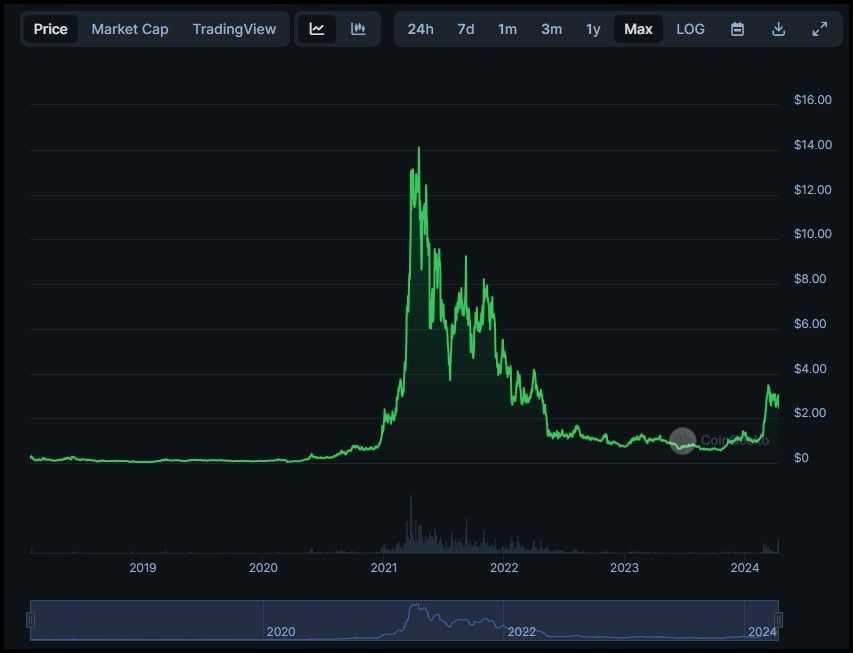
What’s New in Theta
Theta commenced operations in 2019 with a sole focus on video streaming. It has since expanded to leverage the existing infrastructure for catering to new demands of the industry:
- Theta launched the Metachain in April 2022, a horizontal scaling solution that allows running multiple chains parallelly, with faster processing times. The subchains will connect to the Theta main chain.
- The project plans to launch the Theta EdgeCloud in 2024. It is a decentralized cloud computing platform for AI computation, 3D and video rendering, and performing gaming computations.
Learn more about the project in the Theta Review.
Akash Network
Akash Network is a compute services DePIN project. It is a decentralized solution to centralized businesses like Microsoft Azure and Google Cloud Platform. For instance, Azure is a cloud computing provider comprising global servers providing computational resources to run programs on the cloud, such as websites, analytics, and networking.
Unlike Azure, Akash is a decentralized cloud computing program. Instead of centralized servers, users with personal servers, data centers, or spare computational resources participate in an on-chain compute marketplace. These providers place on-chain bids, and Tentants, who need the resources, accept the optimal offers.
Key Features of Akash Network:
- Akash Blockchain: It is a Cosmos SDK blockchain that hosts the Akash Marketplace and renders the compute services to the tenants using smart contracts. It also facilitates rudimentary processes like governance, PoS consensus, and staking.
- AKT Token: It is used for renting compute resources, staking in the network and governance.
- Economical: Akash’s decentralized compute services are significantly cheaper than traditional counterparts like Azure.
- Akash Supercloud: An upgrade addressing inefficiencies in GPU access by providing permissionless access to compute resources.
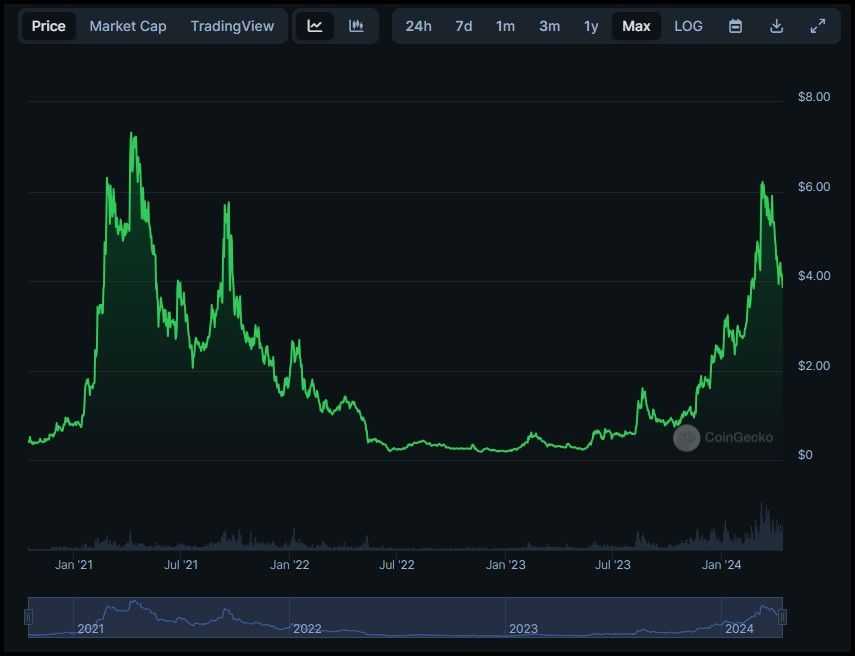
The AKT 2.0 update underscores significant architectural improvements such as an incentive distribution pool comprising AKT and some whitelisted tokens, subsidizing compute providers, and creating a public goods fund for the welfare of the ecosystem. Learn more about Akash Network in our dedicated Akash review.
Arweave
Arweave is a decentralized data storage network that provides permanent and immutable data storage solutions. It believes in a pattern of decreasing the cost of permanent storage. It defines a sustainable endowment framework that extrapolates the decreasing cost of storage over the last 50 years to predict the finite cost of indefinite storage.
Arweave Permaweb
Arweave Permaweb is a decentralized web iteration powered by the Arweave Protocol. Permaweb comprises two components:
- Arweave blockchain: It is secured by a decentralized network of miners that provide permanent storage of rewards in AR tokens based on sustainable endowment.
- Gateways: They enable data accessibility for web browsers.
Permaweb apps are applications built on Arweave. These apps can access the full Arweave stack:
- Arweave blockchain
- Gateways
- GraphQL, a querying system
- SmartWeave, a smart contracting system
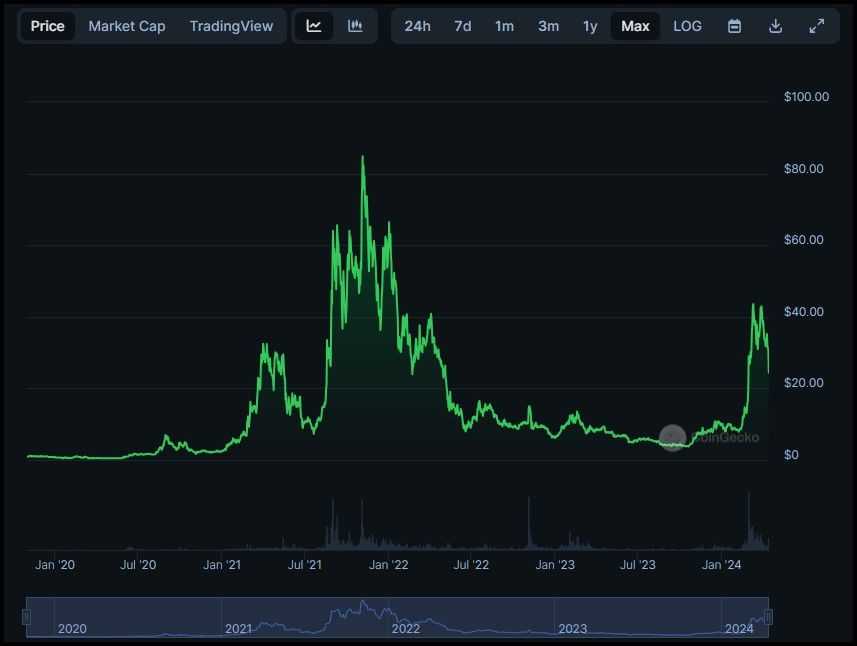
The AR token is central to the Arweave ecosystem, compensating for enabling permanent immutable storage. Learn more about Arweave from Guy on YouTube:
Filecoin
Filecoin is one of the earliest DePIN projects. Competing centralized services like Amazon S3, Filecoin is a decentralized data storage solution like Arweave. It creates an open market for storage where anyone can rent out their hardware storage on a decentralized blockchain.
Filecoin was a pioneer of Decentralized Storage Networks (DSN). Filecoin’s native digital currency, FIL incentivizes storage provision in the ecosystem. Here are some key features of Filecoin:
Decentralized Storage Network: Filecoin transforms the cloud storage market into an open market by allowing anyone worldwide to participate as a storage provider (also known as a storage miner).
Proof of Storage: Filecoin’s novel proof mechanisms, Proof of Replication (PoRep) and Proof of Spacetime (PoSt), ensure that data is stored securely and reliably over time. These mechanisms make cheating computationally expensive, thus securing the network and the data stored within it.
Incentive Structure: Miners earn Filecoin by storing client data and correctly proving they are doing so over time. The more storage they add to the network and the longer they store it, the more Filecoin they earn.
Retrieval Market: Miners can earn Filecoin by retrieving data quickly, in addition to earning money for storing data. This creates a competitive market for miners to develop ever-faster and more efficient retrieval technologies.
Interoperability with IPFS: Filecoin is designed to work interchangeably with IPFS, which allows Filecoin to function as a financial layer rewarding persistence commitments in IPFS, a protocol designed for peer-to-peer storage of files.
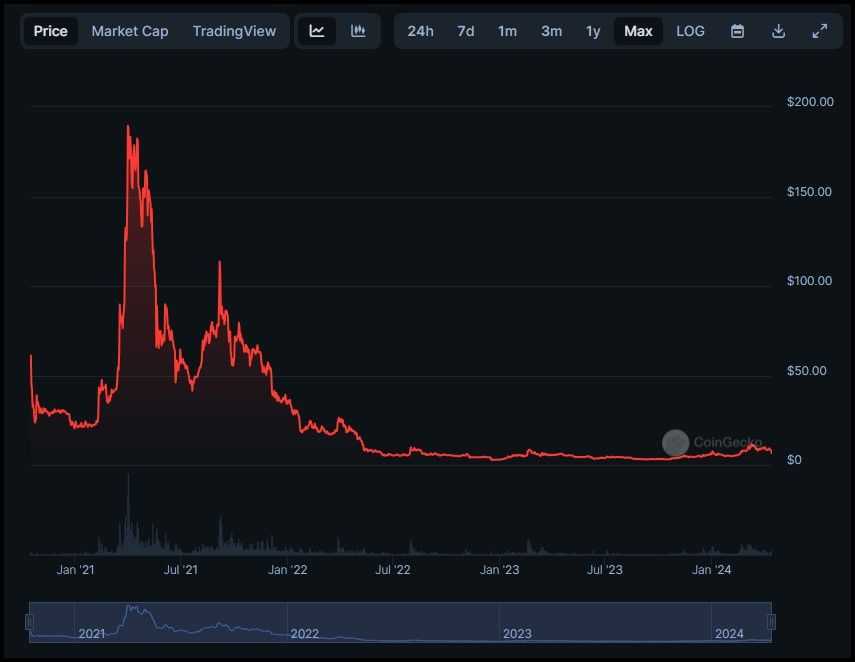
The tokenomics and utility of the Filecoin (FIL) token include:
- Incentives: Earned by miners for storing and proving the storage of data.
- Payments: Used by clients to pay miners for storage and retrieval services.
- Economic Security: Staked by miners as collateral to ensure honest service delivery.
- Governance: Allows holders to participate in decisions affecting the network's future.
- Network Participation: Required to engage in storage and retrieval markets, promoting active participation and growth of the network.
- Scarcity: Limited supply influencing demand and value.
Checkout the Filecoin review on the Coin Bureau or Guy’s analysis on YouTube:
Render Network
Render network, as the name suggests, is a compute network protocol that allocates providers' idle GPU power for 3D rendering AI computation tasks. The network creates a market for GPU power valued in the RNDR token.
Users with spare GPU power can rent it out to earn rewards in RNDR, where the network renders the GPU power on-chain. Render was initially on the Polygon network with the RNDR token developed in the ERC-20 token standards. The Render network migrated to the Solana blockchain in November 2023 to leverage its low gas and high throughput environment.
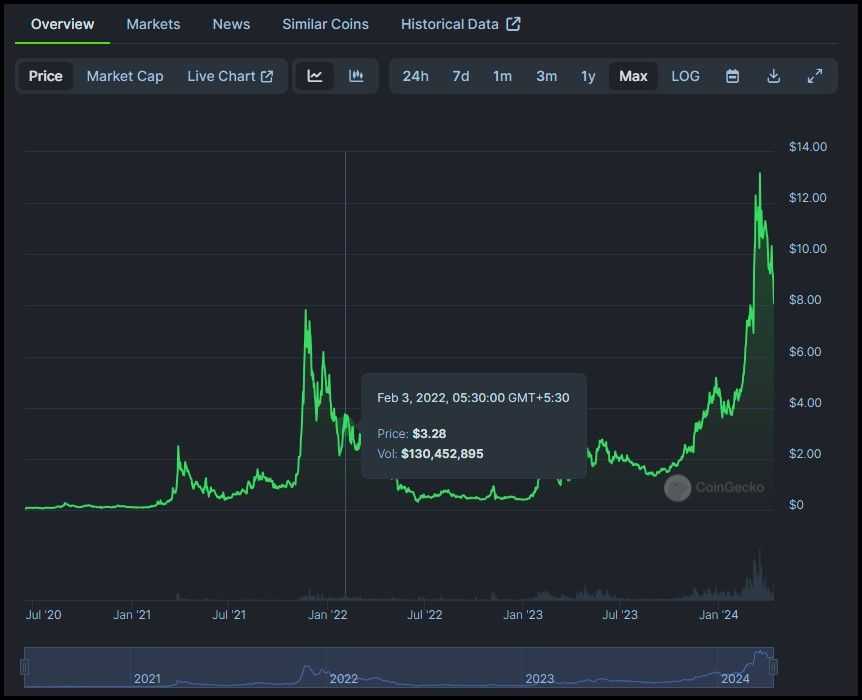
Render is one the highest valued DePIN projects in 2024, according to the DePIN projects listed curated on Coingeckoa. Learn more about Render network on the Coin Bureau.
Helium
Helium is a globally distributed hotspot network that creates a public decentralized wireless network for IoT and cellular devices. Helium runs on the Solana blockchain, which provides fast execution and economic security. Helium runs on a three-token model:
- HNT Token: Native token of the network and creates an incentive mechanism for Helium network participants.
- IOT Token: A specialized token that empowers low-power, wide-area connectivity for Internet of Things (IoT) devices.
- MOBILE Token: A designated token for cellular data users with high-speed network data transmission.
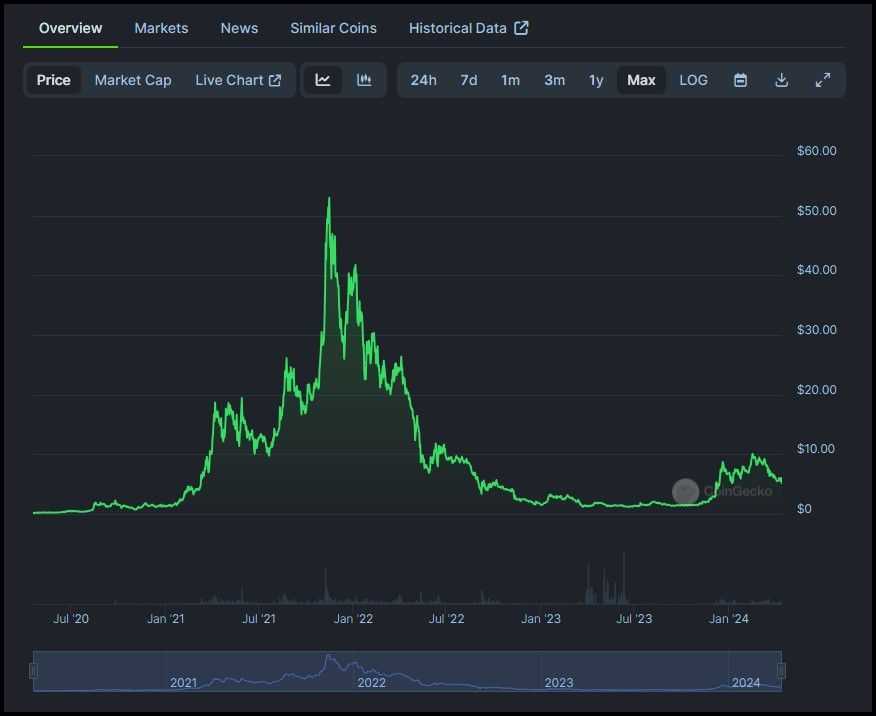
The Helium network incentivizes Hotspot owners to maintain compatible wireless devices to provide network coverage to IoT devices and mobiles. A new consensus mechanism called Proof-of-Coverage rewards participants for verifying wireless network coverage.
Hivemapper
Hivemapper is a decentralized geospatial network. It is a decentralized mapping protocol that tokenizes spatial data to create an open market for maps and mapping APIs.
Hivemapper argues that creating high-quality maps is expensive. The development involves mapping millions of miles of geographical data and street-level imagery. The high maintenance and development costs have gatekept mapmaking services with several entities.
With Hivemapper, users get access to high-quality geospatial analytics, maps, data collection services, and APIs. General users can earn the HONEY token by providing street-level imagery and contributing to improving maps by engaging with AI trainers. They can later redeem HONEY tokens to access Hivemapper services. Three key characteristics of Hivemapper are:
- Decentralization: It facilitates an open market for geospatial data run by community members. Hivemapper code is also open-source.
- Permissionless: As long as participants follow certain basic rules, anyone can contribute to Hivemapper development or access its services.
- Rewards-based: The protocol facilitates an incentive-based ecosystem, allowing value accrual for anyone participating in map development.
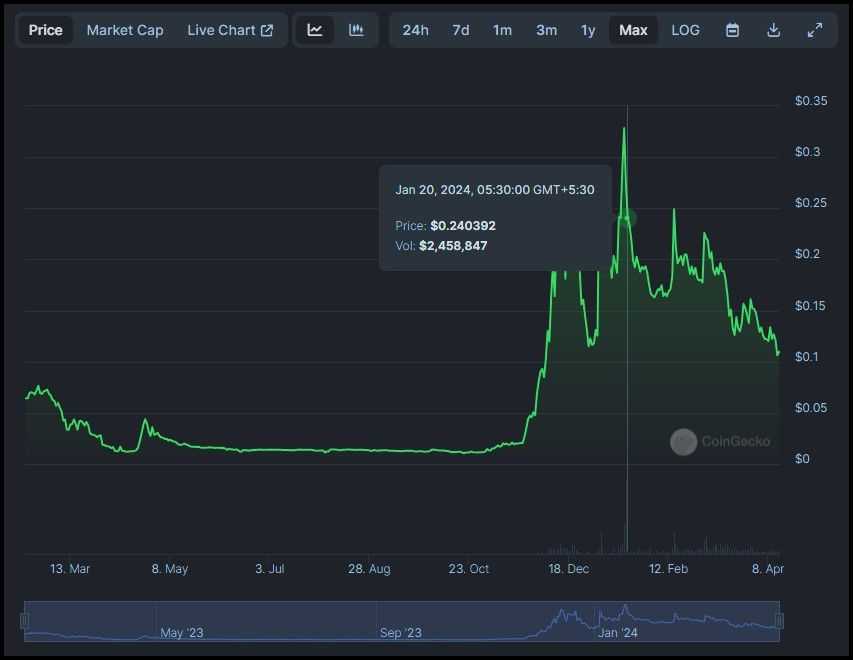
DIMO
Our vehicles have become increasingly digital every year. We are not just adopting electricity as a fuel source but packing our rides with more and more sensors, computers, and cameras that constantly collect data on a vehicle’s performance, usage, and other relevant statistics.
DIMO argues that users who generate this data by driving around have a claim over it. Still, manufacturers like Tesla, Ford, and GM have historically gatekept this data to train their AI models and vehicle software. DIMO is partnering with NATIX to democratize vehicle data collection and capitalization. With DIMO hardware that users install in their vehicles and synergies established with automotive services, users can sell their data in NATIX tokens, creating some value for driving their cars around, which they were doing anyway.
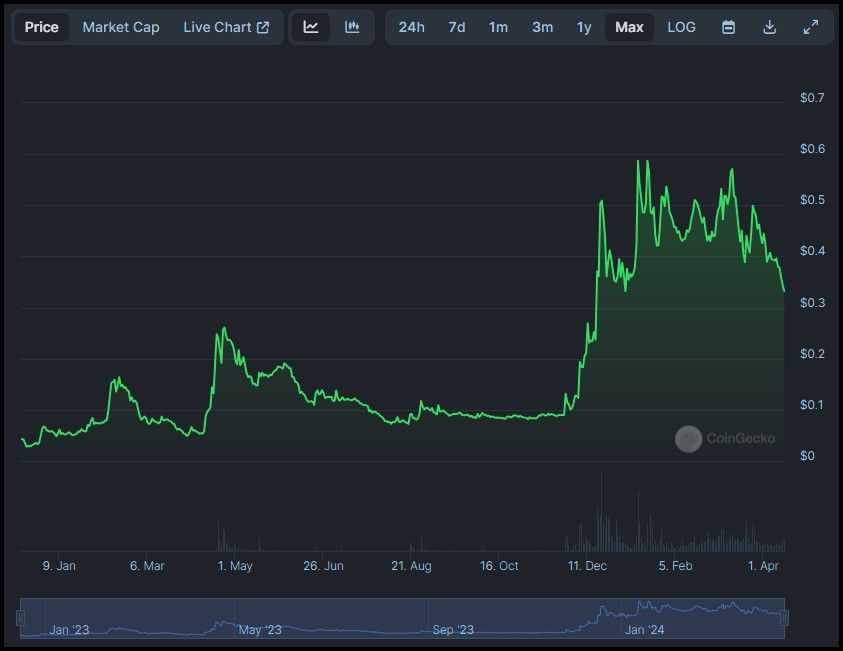
Closing Thoughts – Do DePINs contribute to a more efficient infrastructure?
DePINs undoubtedly herald a new era of efficiency in infrastructure management, leveraging decentralized models that typically incur lower operational costs compared to their centralized counterparts. By distributing system management across multiple points rather than a single central location, DePINs offer innovative solutions that are not only cost-effective but also robust and scalable.
However, while the potential for increased efficiency is clear, their long-term sustainability and effectiveness remain to be fully tested in real-world scenarios. As these technologies evolve and mature, ongoing assessment and adaptation will be crucial in ensuring they can reliably meet future demands and challenges in infrastructure management.
Frequently Asked Questions
DePIN, or Decentralized Physical Infrastructure Networks, represents an innovative approach to infrastructure management utilizing decentralized technologies. This concept extends the decentralized principles of blockchain to various physical systems such as telecommunications, energy distribution, and transportation. By leveraging distributed ledgers and smart contracts, DePIN aims to create more resilient, efficient, and transparent networks. These networks manage resources without central authority, potentially reducing costs and improving service delivery by harnessing the collective capabilities of network participants.
DePIN is fundamentally blockchain-dependent because it relies on this technology to achieve decentralization and maintain integrity across widely distributed networks. Blockchain provides a secure, transparent, and immutable ledger that ensures every transaction or interaction within the network is recorded and visible to all participants. This transparency helps prevent fraud and corruption, which are significant risks in traditional centralized infrastructure systems. Additionally, blockchain's smart contract functionality automates network operations, enforcing agreements directly in code, which significantly enhances efficiency and reduces the potential for disputes.
Several pioneering projects exemplify the potential of DePIN across various sectors:
- Helium: Focuses on creating decentralized wireless networks where users operate nodes that provide and validate network coverage, earning cryptocurrency for their contributions.
- Filecoin and Arweave: These projects revolutionize data storage by allowing users to rent out unused disk space in a secure, decentralized manner, improving storage efficiency and reliability.
- DIMO and Plural Energy: These platforms target mobility and energy sectors respectively, offering decentralized solutions that enhance data transparency and resource management.
- Theta Network: This project creates a decentralized bandwidth network that allows users to share excess video streaming capacity, reducing costs and buffering times for viewers.
Decentralized Compute Networks are a subset of DePIN focused on distributing computational resources across a decentralized architecture. Unlike traditional cloud computing, which relies on centralized data centers, decentralized compute networks like Akash Network and Render allow individuals to offer their unused computing power to others over the blockchain. This model not only maximizes resource utilization but also reduces costs and enhances privacy and security. By leveraging collective computing power, these networks support a wide range of applications, from simple data processing to complex graphical rendering.
The future of DePIN looks promising as it aligns with the broader trend towards decentralization in technology and governance. As blockchain technology matures and more industries recognize the benefits of decentralized models, DePIN could significantly transform how critical infrastructure is managed and operated. Potential developments include greater integration with IoT devices, wider adoption in critical sectors like healthcare and public utilities, and enhanced regulatory frameworks tailored to decentralized networks. Moreover, as public trust in these systems grows and technological hurdles are overcome, DePIN could become a standard approach for infrastructure management, offering a resilient, efficient alternative to conventional systems.
Disclaimer: These are the writer’s opinions and should not be considered investment advice. Readers should do their own research.


